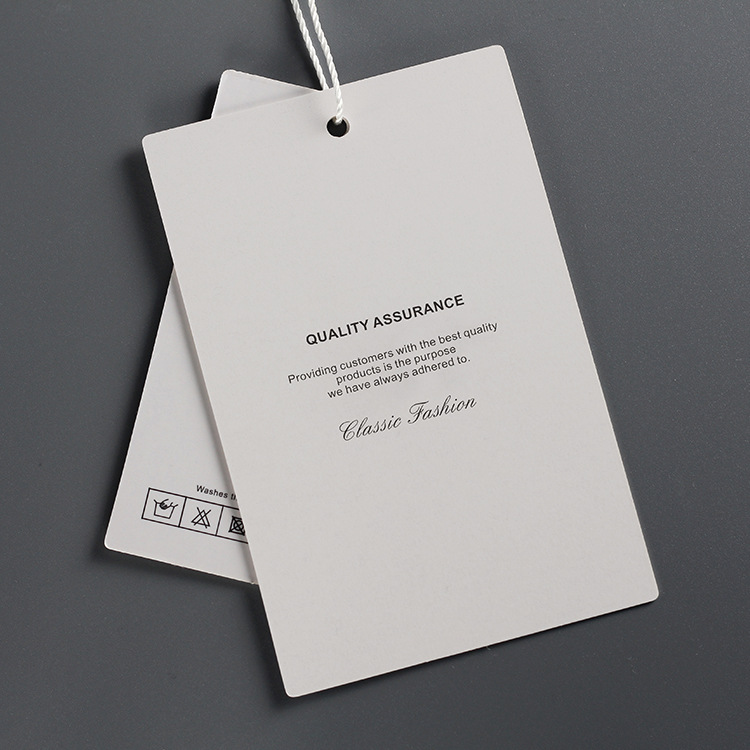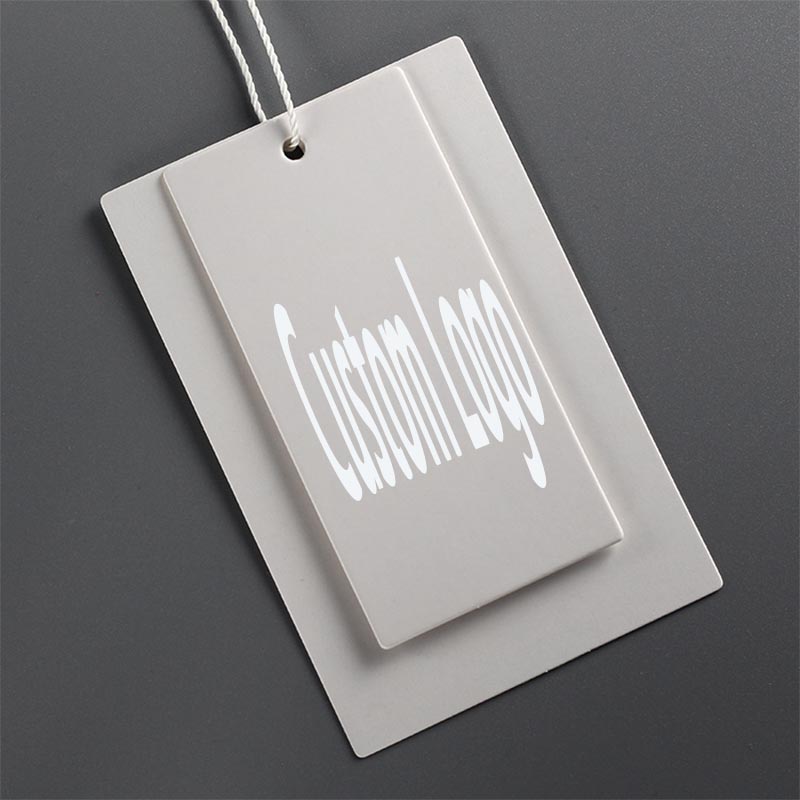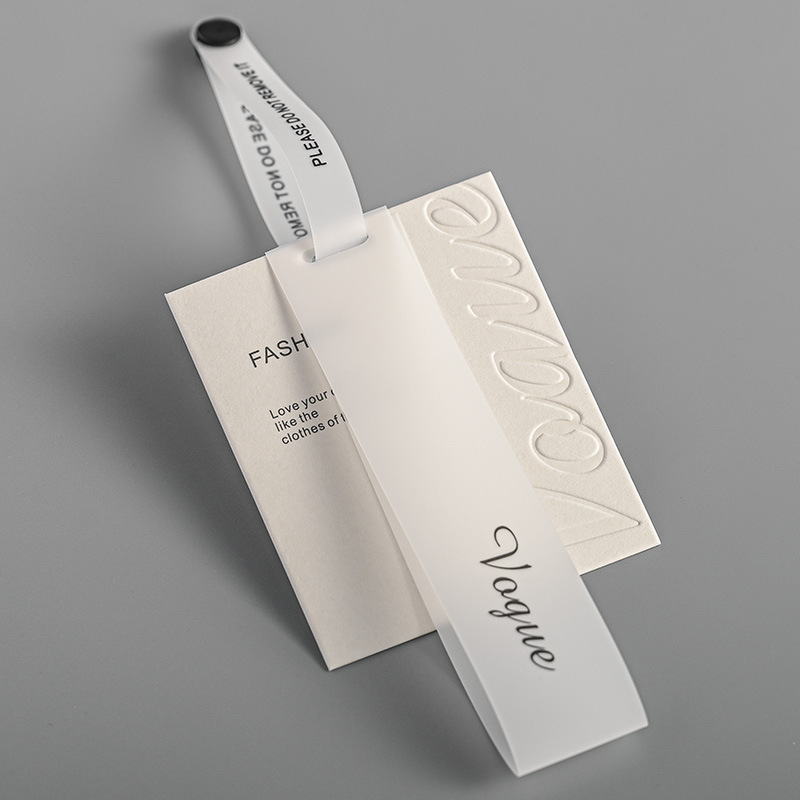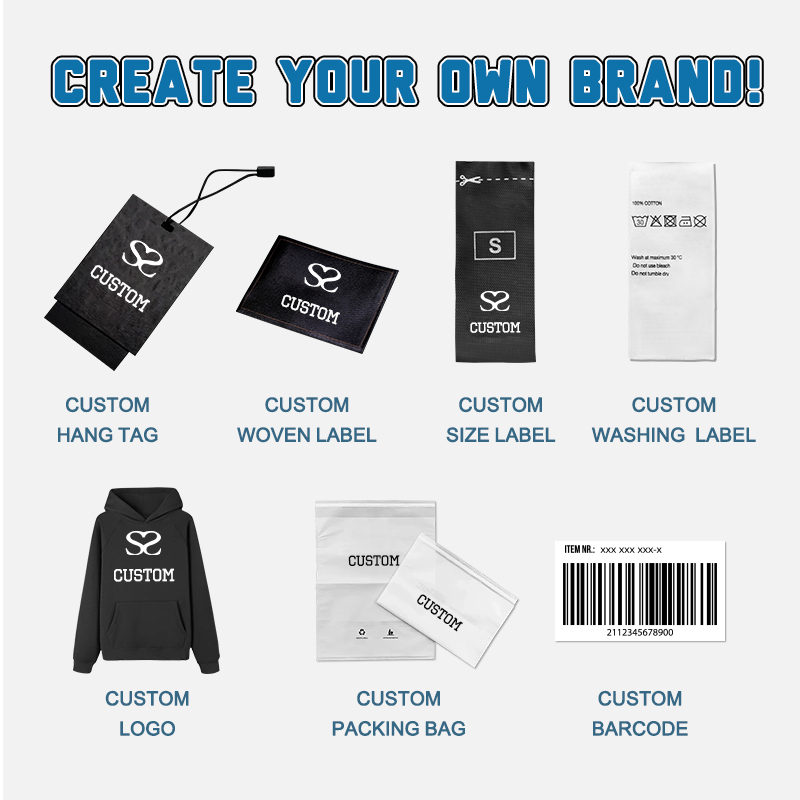In the highly competitive clothing market, the clothing tag is not only the "ID card" of the product, but also the key display window of the brand image. A smart design, accurate information tag, can significantly enhance the added value of clothing, firmly attract the attention of consumers. So, how to customize the clothing tag, and what is the specific customization process? Let's learn the tag process together.
1. Define design requirements
(1) Brand information combing
The brand name and logo are the core elements of the tag design. Taking the well-known brand ZARA as an example, the brand logo on its tag is simple and eye-catching, and consumers can recognize it at a glance. You must ensure that you have a vector image of the brand logo, so that during the tag production process, you can ensure that the image is clear and there will be no distortion. At the same time, it is also extremely important to sort out the brand's positioning and style. If the brand focuses on simple fashion, then the tag design should also reflect this feature, to avoid too complicated design, so as not to contradict the brand style.

(2) Product information integration
Information such as material, size and washing instructions are indispensable. Uniqlo T-shirt tags, for example, clearly label the fabric composition, such as "100% cotton", with detailed size tables and washing recommendations, such as "machine washable, not bleached". This information can accurately convey product characteristics and help consumers better understand and use the product. In addition, if the garment has a special process or unique selling point, such as antibacterial treatment, unique tailoring, etc., it should also be highlighted on the tag to enhance the appeal of the product.
(3) Design style conception
According to the characteristics of the brand and the product, the design style of the tag is conceived. If it is a children's clothing brand, it may wish to use lively and lovely colors and cartoon images to meet the preferences of children; If it is a high-end women's clothing brand, simple and elegant design with high-end materials may be more appropriate. For example, the current big-name tags in Europe and the United States often use simple lines and simple materials to fully show the literary and natural brand style, so that consumers can have an intuitive feeling of the brand style through the tags.

2. Find the right manufacturer
(1) Online platform search
With the help of Google, Alibaba and other platforms, enter keywords such as "clothing tag customization", you can obtain a large number of manufacturer information. On the Alibaba platform, you can view the store level, transaction evaluation and other content of the manufacturer, so as to screen out the reputable manufacturers. For example, some gold suppliers tend to be more secure in terms of product quality and service levels. At the same time, browsing the manufacturer's website and viewing its past cases will help you to have a deep understanding of the manufacturer's production capacity and design level, laying the foundation for subsequent cooperation.
(2) offline survey
Participate in clothing accessories exhibition, such as the accessories exhibition area of China International Clothing Expo (CHIC), can directly communicate with manufacturers face to face. Here, you can view the tag sample, personally feel the material and process, but also with the manufacturer in-depth communication customization details. Many well-known tag manufacturers will show the latest products and technologies at the exhibition, to provide you with more creative inspiration, to help you develop ideas, find more customized solutions in line with needs.
(3) Peer recommendation
It is a good way to ask the peer about the high-quality tag manufacturers that have cooperated. The practical experience of peers is of high reference value, they can share the advantages and disadvantages of the cooperation process, and help you quickly select reliable manufacturers. For example, join the clothing industry exchange group, ask the tag customization manufacturers in the group recommendation, often can get the advice of many peers, to provide more basis for your choice.
3. Communicate production details
(1) Material selection
Common tag materials are paper, plastic, metal and so on. Paper material cost is relatively low, can choose coated paper, kraft paper and so on. Coated paper printing effect is excellent, bright colors; Kraft paper is more natural and simple. Plastic materials such as PVC, PET, waterproof, durable characteristics, suitable for outdoor clothing tags. Metal material (such as aluminum alloy) high-grade texture, often used in high-end clothing brands. The tags of some products like Hermes are made of metal, highlighting the luxury positioning of the brand and improving the overall grade of the product.
(2) Process determination
The printing process includes offset printing, screen printing, hot stamping, UV and so on. Offset printing color is rich and diverse, suitable for printing complex patterns; Screen printing has a strong three-dimensional sense, which can make the pattern more hierarchical; Hot stamping can enhance the grade of the tag, so that it is more high-end; UV can make the pattern local bright effect, enhance the visual impact. In addition, there are drilling, threading, indentation and other post-processing technology. For example, some brand tags use the punching rope process, which is not only convenient to hang on the clothing, but also increases the fun of the tag and adds a unique charm to the product.

(3) Size and shape design
According to the clothing style and packaging needs to determine the size of the tag. Conventional sizes are 5cm×3cm, 8cm×5cm, etc., of course, special sizes can also be customized. In terms of shape, in addition to the common rectangle and square, it can also be designed into a circle, triangle, shaped and so on. For example, a fashionable clothing tag is designed into a unique lightning shape, which complements the brand style, effectively enhancing the brand recognition and making the brand image more popular.
(4) Quantity and price negotiation
Manufacturers generally have minimum order requirements for customized quantities, usually ranging from several hundred to several thousand. Generally speaking, the higher the number of customizations, the lower the unit price. When negotiating the price with the manufacturer, be sure to clarify the services included in the price, such as design fees, plate making fees, freight, etc. At the same time, you can ask manufacturers to provide different quantities of the range of quotation, so that according to their own needs, choose the most affordable solution, to achieve the maximum cost benefit.
4. Proof confirmation and production
(1) Proofing process
The manufacturer will make samples according to the design scheme determined by communication. This step is very important, you need to carefully check the color, material, process, size, etc. of the sample to meet the requirements. For example, if there is a gold stamping part in the tag design, it is necessary to check whether the actual stamping effect is consistent with the expected, and whether the color is biased. Once the problem is found, it should be communicated with the manufacturer and modified in a timely manner to ensure that the sample fully meets your expectations.
(2) Production stage
After confirming that the sample is correct, the manufacturer will enter the mass production process. The production cycle usually ranges from a few days to a few weeks, depending on the number of orders and the complexity of the process. During this period, you can maintain close communication with the manufacturer and keep abreast of the production progress. After the manufacturer completes the production, it will be packed in accordance with the agreed packaging method and shipped through logistics to ensure that you can receive customized clothing tags on time.
Custom clothing tags need to start from the design needs, carefully find the right manufacturer, meticulous communication and production details, and strictly control the proofing and production links. Through these steps, you will get a quality tag that fits your brand and product positioning, adding unique charm to your clothing products and standing out in the fierce market competition.

Post time: Apr-01-2025






